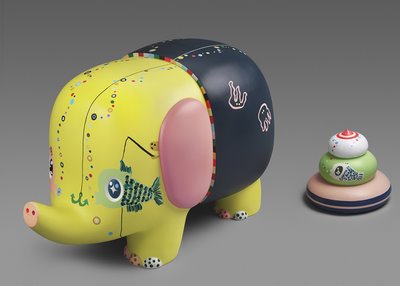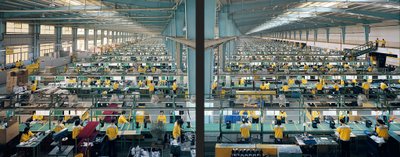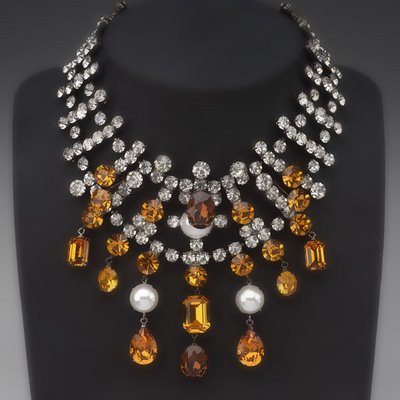Japanese art at MFA
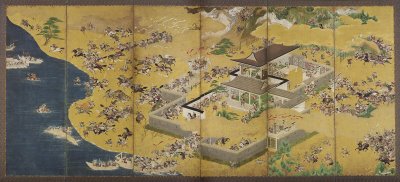
Here’s the beginning of my review of three exhibits of Japanese art at Boston’s Museum of Fine Arts:
Around 1600, after a century of civil wars, Japan settled into an era of relative peace under the samurai warriors of Edo (present-day Tokyo). There and in Osaka and Kyoto, “pleasure quarters” developed. They offered legal brothels, theaters, and teahouses where, the catalogue for the Museum of Fine Arts’ “Drama and Desire” explains, “even the most reliable, serious-minded family man luxuriated shamelessly in all manner of musical entertainment and dance performed by geisha or in witty conversation and other intimacies with a courtesan” — i.e., a prostitute.Read the rest here.
The contemporaneous prints that captured this “ukiyo,” or “floating world,” are well known, but the MFA’s “Drama and Desire: Japanese Paintings from the Floating World 1690–1850,” in the Torf Gallery, provides a rare sampling of 83 “ukiyo-e” (“pictures of the floating world”) paintings. All are drawn from the MFA’s collection of more than 700, which it proclaims the “finest” and “largest collection of its type in the world.” They were acquired in Japan in the 1870s and 1880s, when Boston and the MFA were visionary in their art collecting. Ah, the good old days.
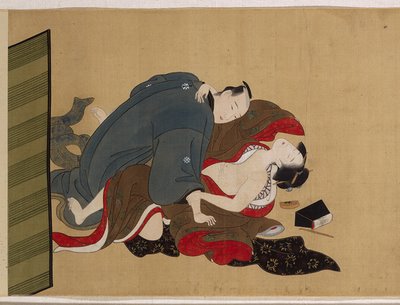
I feel obliged to note that “Drama and Desire” includes a handful of samples from the Mfa’s collection of 100 sexually explicit “shunga,” or “spring pictures” (including the handscoll pictured above) which MFA curator Anne Nishimura Morse, who organized the exhibition, says amount to the largest group of erotic ukiyo-e paintings anywhere.
“Drama and Desire: Japanese Paintings from the Floating World 1690-1850,” Aug. 28 to Dec. 16, 2007. “Arts of Japan: The John C. Weber Collection,” Sept. 22, 2007, to Jan. 13, 2008. “Contemporary Outlook: Japan,” July 2, 2007, to Feb. 10, 2008. Museum of Fine Arts, 465 Huntington Ave., Boston.
Pictured: From “Arts of Japan”: “Battles of Ichinotani and Yashima,” 17th century, pair of folding screens; John C. Webber Collection, photography © John C. Webber and John Bigelow Taylor, courtesy Museum of Fine Arts, Boston. From “Drama and Desire”: Detail of Katsukawa Shuncho “Collection of Suggestive Pictures,” handscroll. From “Contemporary Outlook: Japan”: Chinatsu Ban,“Fish Eyes - Sixth of Ten Brothers,” 2005, from Museum of Fine Arts, photography © Museum of Fine Arts, Boston.
